European Hedgehog: The Spiny Sentinel of the Night
Table of Contents
Scientific Classification
| Kingdom | Animalia |
| Phylum | Chordata |
| Class | Mammalia |
| Order | Eulipotyphla |
| Family | Erinaceidae |
| Genus | Erinaceus |
| Species | E. europaeus |
| Scientific Name | Erinaceus europaeus |
Description
The European hedgehog (Erinaceus europaeus) is quite a charming little creature that’s hard to miss. With its short legs, rounded body, and a coat covered in spines, it stands out in any garden. Unlike porcupines, these spines—modified hairs made of keratin—stay firmly attached. On average, an adult hedgehog measures about 20–30 centimeters (8–12 inches) in length and typically weighs between 600 and 1200 grams.
Beneath its prickly exterior, the hedgehog has a soft, furry underbelly. Its back is adorned with up to 7,000 spines, which act as its first line of defense against predators. This little critter features a pointed snout, button-like black eyes, and small, rounded ears. Its whiskers are particularly useful for navigating in the dark, helping it find its way around at night.
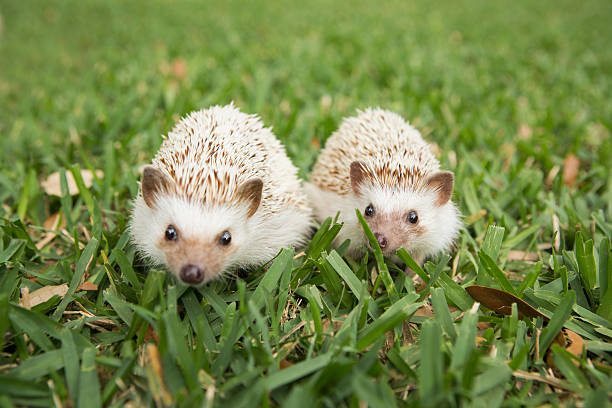
Distribution
Erinaceus europaeus, commonly known as the European hedgehog, can be spotted across a large swath of Western and Central Europe. Its range extends from Portugal all the way up to Scandinavia and stretches eastward into Russia. You can find them in the British Isles, France, Germany, Italy, Denmark, and various parts of Eastern Europe. However, they tend to steer clear of the Mediterranean islands and some alpine regions. Interestingly, they’ve also made a successful home in New Zealand.
The distribution of these little creatures has been impacted by urbanization and climate change. Still, robust populations continue to thrive in areas that boast green corridors and natural undergrowth.
Habitat
European hedgehogs are quite adaptable. They thrive in many different habitats. They are commonly found in:
- Woodlands
- Hedgerows
- Grasslands
- Suburban gardens
- Farmlands
They do well in places with lots of ground cover. This includes leaf litter, brambles, and compost heaps. Gardens and parks are great homes for hedgehogs. They need shelter and less pesticide.
These habitats offer plenty of foraging areas for insects. They also provide natural nesting materials, such as leaves and moss.
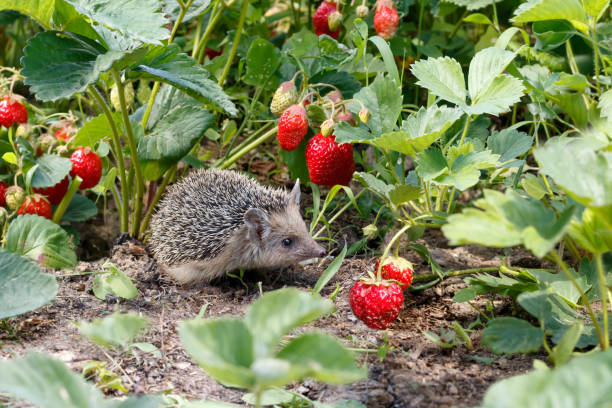
Diet
European hedgehogs are technically classified as insectivores, but they’re really more like opportunistic omnivores. Their menu includes a variety of tasty treats such as:
– Beetles
– Earthworms
– Caterpillars
– Earwigs
– Slugs and snails
– Millipedes
– Spiders
– Occasionally, carrion
– Rarely, bird eggs
– Fallen fruits
Thanks to their keen sense of smell and sharp hearing, they can sniff out their next meal hiding beneath the soil or among the leaves. In gardens, these little creatures serve as natural pest controllers, and environmentally-conscious gardeners truly appreciate their presence.
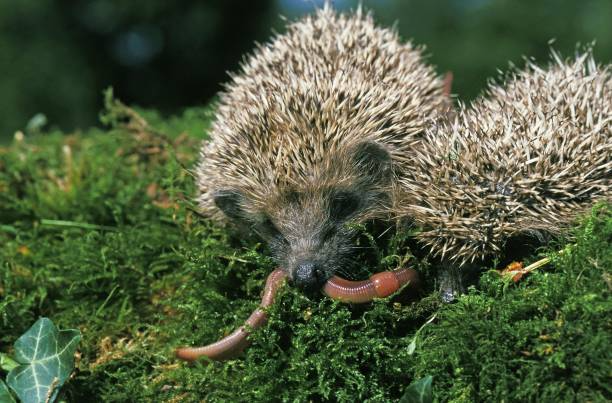
Behavior
Hedgehogs are fascinating little creatures that prefer to keep to themselves and are most active at night. As dusk falls, they venture out to search for food, sometimes covering a distance of 2 to 3 kilometers in just one night! While their eyesight isn’t the best, they make up for it with an impressive sense of hearing and smell.
When it comes to self-defense, a hedgehog has a clever trick: it curls up into a tight ball. This not only protects its vulnerable belly but also presents its sharp spines to any potential threats. This unique ability is thanks to a special ring of muscles that runs along its back and sides.
Interestingly, hedgehogs aren’t territorial, but they do have a specific area they like to roam and patrol regularly. They communicate with a variety of sounds, including grunts, snuffles, and soft squeaks, especially during mating season or when they feel threatened.
As the colder months roll in, hedgehogs enter a state of hibernation, which is quite unusual for mammals in Europe. They seek out a snug little nest and settle in until spring arrives.
Lifespan
In the wild, European hedgehogs usually live 3 to 5 years. However, some can live up to 7 years if conditions are perfect. Their life expectancy is heavily influenced by:
- Predation
- Habitat fragmentation
- Road mortality
- Parasites and disease (like lungworm or mange)
In captivity or safe environments, they can live longer with good care and diet.
Reproduction and Lifecycle
Hedgehogs follow a seasonal reproductive cycle. Mating occurs during warmer months, with most births between May and September.
Lifecycle Stages:
- Birth: After a 4–6 week gestation, females give birth to 4–6 hoglets.
- Infancy: Babies are born blind and spineless, but soft spines emerge within hours.
- Weaning: By 3–4 weeks, the young begin foraging with the mother.
- Independence: At 6–7 weeks, they leave the nest to start solitary lives.
- Maturity: Hedgehogs reach sexual maturity by 10–12 months.
Notably, hedgehogs do not mate for life. A female raises her offspring alone, and males play no role after mating.
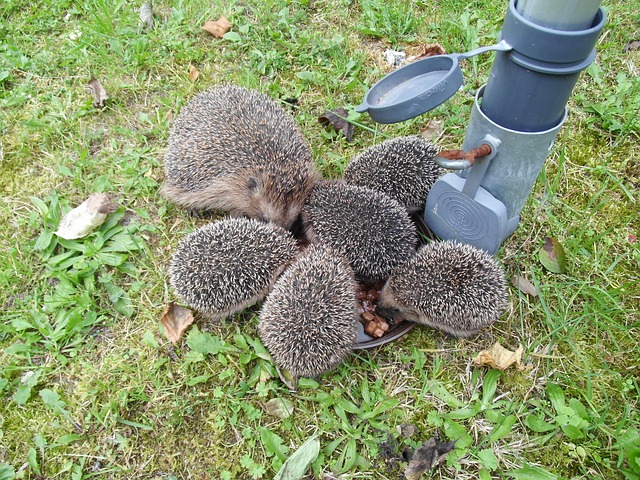
Predators
While hedgehogs are well-armed with spines, they are not invincible. Their natural predators include:
- Foxes
- Badgers (perhaps their most dangerous predator)
- Birds of prey (like owls and eagles)
- Domestic dogs
Badgers, in particular, are strong enough to unroll hedgehogs. However, the biggest threat today is humans, through:
- Road traffic accidents
- Habitat loss
- Poisoning from pesticides
Urban sprawl has made their lives riskier and more reliant on human kindness.

Nest
Nests are essential for sleeping, breeding, and hibernating. Hedgehogs are master nest builders, using:
- Dry leaves
- Grass
- Moss
- Twigs
They create dome-like structures hidden in hedgerows, under sheds, or inside compost heaps. During hibernation, they construct hibernacula—dens that provide insulation and protection for months.
Nests need to be moisture-resistant and insulated. This is important because body temperature drops a lot during hibernation.
Adaptations
The hedgehog is full of evolutionary surprises that help it thrive:
- Spines: Defense against predators.
- Balling mechanism: A muscular marvel enabling full-body protection.
- Nocturnality: Reduces encounters with predators and competitors.
- Sensitive snout: Packed with olfactory receptors for finding prey.
- Hibernation: Enables survival during cold, food-scarce winters.
- Self-anointing behavior: When they encounter new scents or tastes, they make frothy saliva. Then, they spread it on their spines. This may help with sensing or camouflaging.
These adaptations, though ancient, are remarkably suited to both natural and semi-urban environments.
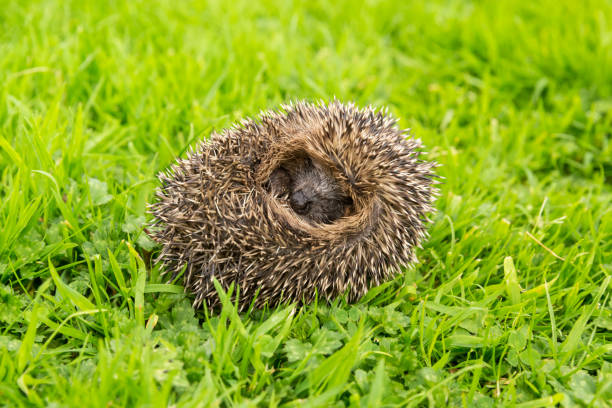
Mating Season
The hedgehog’s mating season spans from April to September, peaking in May and June. Courtship is a strange but charming event. Males dance around females in a rhythmic “hedgehog dance.” They make grunts and snorts during this display.
Males may fight over mates, though battles are usually non-lethal. If the female is receptive, mating occurs, followed by a quick departure by the male.
Late-season matings can lead to autumn litters. These litters have a lower chance of survival because winter hibernation is approaching.

Breeding
Gestation lasts 35–45 days. Mothers give birth in well-insulated nests. Newborn hoglets are:
- About 25 grams in weight
- Blind and soft-skinned
- Dependent on maternal warmth and milk
Their spines erupt shortly after birth. By three weeks, they start venturing outside the nest. The mother weans them at 4–6 weeks, and soon after, they disperse to establish their own ranges.
Sometimes, if disturbed, a mother may leave or even eat her young. This shows nature’s tough rules.
Interesting Facts
- Self-Anointing: This odd behavior occurs when hedgehogs spread foamy saliva on their spines. They do this after smelling strong scents.
- Silent but Vocal: They grunt like pigs when foraging and squeal loudly when upset.
- Built-in GPS: Hedgehogs can find their favorite nesting and feeding spots very well.
- Good Swimmers: Despite their stubby legs, they can swim and climb surprisingly well.
- Insect-Eating Allies: They help gardeners by eating slugs, beetles, and caterpillars.
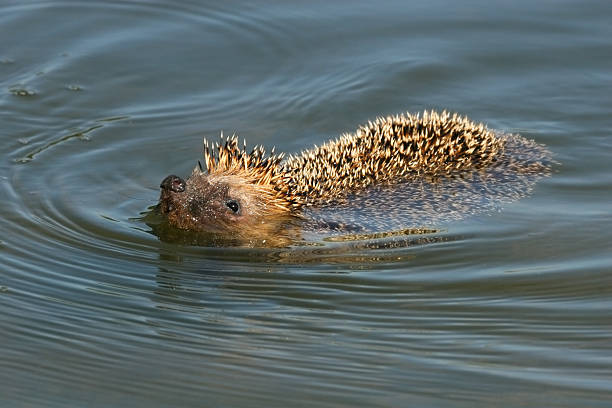
Conservation Status
The European hedgehog is classified as “Least Concern” by the IUCN. However, its populations are declining in many areas, particularly in the UK.
Major threats:
- Road mortality
- Loss of hedgerows and wild spaces
- Pesticide use
- Climate change
- Predation by badgers
Conservation groups are taking action through:
- “Hedgehog Highways”: Small fence gaps that allow safe garden passage.
- Nest boxes: Artificial shelters placed in gardens.
- Public awareness: Campaigns promoting hedgehog-friendly practices like wild gardening and compost use.
The hedgehog’s future depends on us. Gardens, hedgerows, and our mindset will determine if this lovely creature can continue patrolling Europe at dusk.



